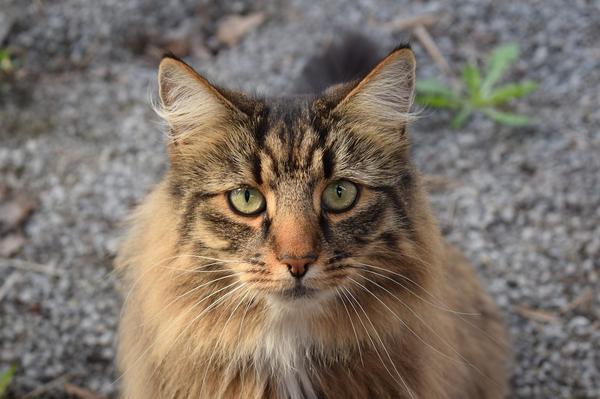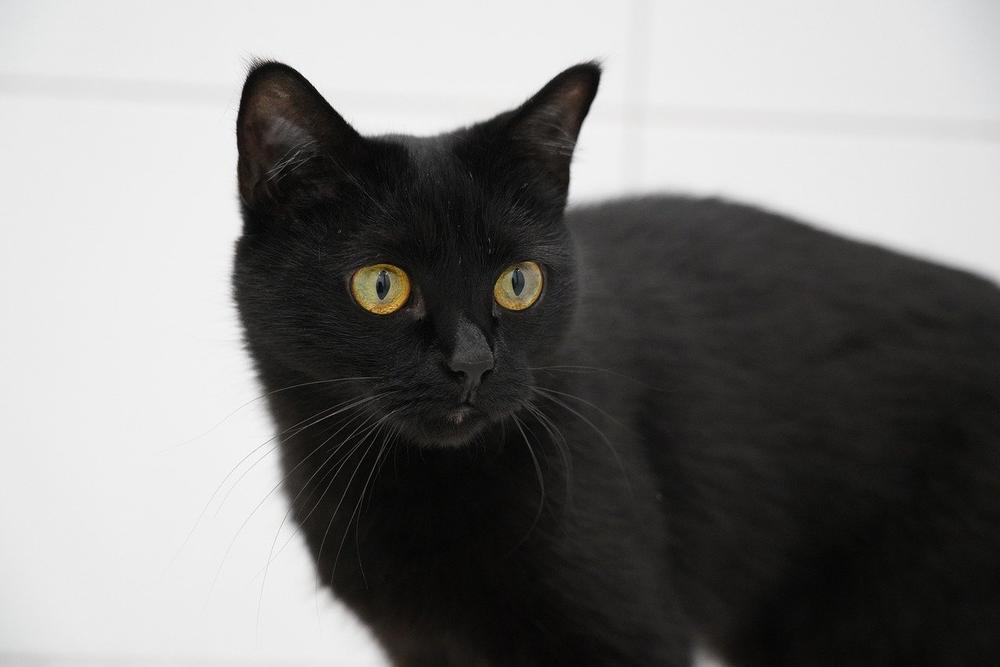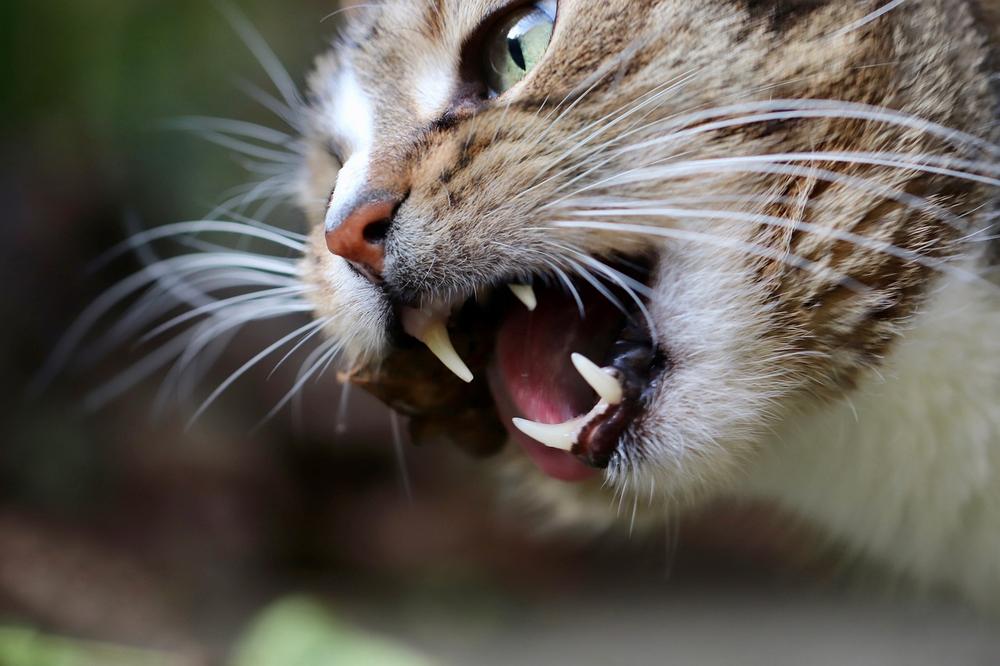When Do Cats Stop Growing? (Detailed Explanation for Owners)

Ever wondered when your furball will stop growing?
Curiosity tingling your senses, huh? 😄
Well, trust me, you're not alone in this anticipation game.
Imagine this:
As you watch those tiny paws scampering around, do you find yourself daydreaming about their future size?
Yeah, I hear you.
So, my feline-loving friend, let's delve into the mysterious realm of cat growth stages together.
Ready?
Let's begin.
When Do Cats Stop Growing?
Cats typically reach their full size by the age of one, although larger breeds like Maine Coons may continue growing until they are 18-24 months old. Female cats mature earlier than males and may go into heat. However, cats can still experience slower growth after the first year.
Cats reach their full size at various ages, based on their breed and size.
If you have a smaller cat, they may reach their full size between 9-12 months old. However, larger breeds like Maine Coons can continue growing until they're 18-24 months old.
But guess what?
Here's the thing:
Most cats are fully grown by the time they reach the one-year mark.
Yes, you heard it right, an entire year.
Now, did you realize that female cats mature earlier than males?
Absolutely true.
They even go into heat.
So be watchful for those signs.
Even though cats are considered adults when they hit 12 months, their adolescence continues until around 18 months old.
So get ready for some teenage-like behavior.

You should note that cats can still experience growth after their first year, but it will happen at a slower pace.
It's almost like they're putting the brakes on their growth spurt.
So how can you ensure if your furry friend has finished growing?
One way is to measure and weigh them each month.
Once those numbers stop changing, there's a good chance they've reached their full size.
It's that simple.
But hold on, here's another interesting tidbit.
After about 6-12 months, cats usually stop growing taller, but they might keep gaining weight.
However, beware because they are more prone to becoming overweight rather than getting taller.
So keep an eye on Fluffy's waistline as time goes by, and you'll be all set.
Main points I'll expand upon further down this article:
- Kittens experience rapid growth in their first six months.
- Factors like breed, gender, diet, and number of siblings affect a cat's size and growth.
- Cats of different breeds age differently as kittens, but age at a similar rate once they reach adulthood.
- Maine Coon cats reach their full size around 2 years old, but may continue growing for up to 4 years.
- Cats go through five stages in their life cycle: Kitten, Junior, Prime Adult, Mature Adult, and Senior.
- Males reach their adult size slower than females and are generally larger.
- Monitoring a kitten's growth is important, including tracking weight, height, and width monthly.
- The transition to adulthood, spaying/neutering, and transitioning to adult cat food are crucial milestones.
- Senior cats have special dietary needs and require regular veterinary check-ups.
- Visual cues like weight and behavior can help estimate a cat's age, but they are not precise indicators.
Now, here's the deal...
While kittens go through a significant growth spurt in their first year, there's still much more to uncover about cats' different life stages and how they develop.
Want to know the best part?
We're just getting started!
Hang on tight as we dive deeper into the fascinating world of feline growth:
When Do Kittens Stop Growing?
During a kitten's first year, growth is crucial.
You'll observe significant changes during the initial six months.

In that short time, kittens double in size within a week and gain about an ounce every three days.
However, after around 16 weeks, growth starts slowing down, following their swift development stage.
When they reach 6-12 months old, kittens typically stop growing taller or longer, although they may continue to gain weight, but at a slower pace.
Remember, you should note that while kitten growth progresses rapidly initially, it tapers off as they grow older.
Comparing Cat Breed Growth and Ageing Rates
Different cat breeds have varying rates of growth, my friends.
For instance, let's discuss the magnificent Maine Coon cats.
These adorable fluff balls take their sweet time to achieve full size in comparison to smaller breeds.
And it shouldn't come as a surprise, considering they are among the largest breeds out there.
Now, understanding these differences is crucial for you, dear cat owners.
It's important that you set appropriate expectations for your fur baby's growth progression.
You wouldn't want to be concerned if your little bundle of joy isn't growing as quickly as you anticipated, right?
So, what factors influence the size and growth of cats?
Well, it's a combination of breed, gender, diet, and, believe it or not, the number of siblings your kitty has.
Let's begin with the breed.
Larger breeds like Maine Coons generally have a longer growth period.
Patience is key, my friend. They may continue growing until about 4 years old—yes, you heard me correctly!
That's quite a growth spurt!
Now, when it comes to gender, female cats can reproduce throughout their entire lives if they aren't spayed.
Therefore, folks, bear in mind that reproduction can be an ongoing process for the ladies, which can also impact their growth pattern.
Oh, and we mustn't forget about diet!
It plays a significant role in shaping your cat's growth.
Remember those larger breeds I mentioned earlier?
Well, they typically take longer to reach their full size and may even experience some stunted growth if their diet isn't up to par.
But fear not, once cats reach adulthood, regardless of their breed, their aging rate tends to level out. It's almost as if they're on the same page as us.
They stop growing, but they do keep getting older, just like us humans!
Specifically, Maine Coons reach their maximum size around 2 years old. However, you need to remember that growth can still occur until they're about 4.
Are you prepared for such a large fur baby?
Now, let's briefly discuss the life stages of cats.
There are five stages: Kitten, Junior, Prime Adult, Mature Adult, and Senior.
It's quite the journey, let me tell you!
And guess what?
Male cats often have slower growth rates compared to females.
Not only that, but they also tend to be taller and heavier than the ladies...quite literally.
In terms of length, height, and weight, the boys take the cake.
Understanding how cats grow and age is vital in order to provide them with the love, care, and attention they need during different stages of their lives.
So embrace your kitty's unique growth journey, my friends, and cherish every purrfect moment spent together. 😺
Now, here's the deal...
As your fur baby grows and transitions through different life stages, it becomes crucial to provide them with the right care.
But what about their overall health?
That's where regular veterinary checkups come in.
How to Keep Your Kitten Healthy as They Grow Up
Regular veterinary checkups are essential
You know, regular checkups for your kitten are super important.
They're like the MVPs of your furry friend's life (and mine too).
They'll give you all the guidance you need to keep your little one healthy and strong.
During these visits, vets will discuss things like vaccination schedules so that your kitten stays protected from those nasty diseases that can make them feel awful.
They'll also guide you on what kind of food is best for your growing furball, making sure they have a balanced diet for maximum purrformance.
Keep an eye on their growth
Your adorable feline friend will grow up right before your eyes!
To ensure they're growing at just the right pace, it's a good idea to measure their weight, height, and width.
This helps you know when they go from being a cute little ball of fluff to becoming a full-grown adult cat.
It'll help you decide the perfect time for them to leave their birth family (sniff sniff) and even make those big decisions about spaying/neutering and transitioning to adult cat food.
Watching your kitten grow up is quite the adventure, and keeping track of their physical changes only adds to the excitement!
From playful kitty to chill cat
As your little furball gets older, their behavior might change.
That hyperactive, always-on-the-go kitten stage will slowly become a distant memory (aww).
Your cat will become calmer and more laid-back with age, just like us humans after a long day.
But hey, don't be too sad!
They'll still have their moments of playfulness, cuddles, and just general cuteness—just not as frequently as before.
Embrace this transition because it's part of your cat's unique journey through life.
And speaking of different stages of life, senior cats have their own special needs.
They require higher quality protein and extra vitamins to stay in tip-top shape. So ensure you take them for those regular checkups because when it comes to your kitty's health, messing around is not an option.
Oh, and by the way, weight plays a pretty important role too.
No one wants an overweight cat (or any pet, really).
So try not to overfeed them (even though their sad, pleading eyes are hard to resist) and encourage them to get some exercise.
A healthy weight means a happy, playful, and energetic cat!
How to Tell How Old a Cat Is
Here are 12 tips to estimate your cat's age, which can be a bit tricky for you:
- Look at their teeth and see if they're in good shape.
- Notice any signs of dental wear or missing teeth.
- Keep an eye out for changes in tooth color, like whiter teeth in younger cats.
- Watch how their weight changes over time.
- Kittens usually gain around one pound each month.
- If a kitten's weight doubles by 16 weeks, it'll likely reach its adult weight.
- Male cats that haven't been neutered develop big cheeks because of testosterone.
- Behavioral changes, like reduced energy levels, may indicate aging.
- Take a look at their fur - older cats might have grayer hairs or thinner coats.
- Pay attention to their hearing and vision abilities.
- Mobility issues and joint stiffness could suggest an older age.
- For a more accurate estimation, consult a veterinarian.
Knowing your cat's age will help you provide the right care for them.

And finally, if you are curious about why your cat's whiskers are so long, I highly recommend checking out my article on the topic.
It dives deep into the fascinating reason behind those magnificent whiskers.
So if you're interested in understanding more about your feline friend, be sure to click here: Why Are My Cats Whiskers So Long.
And that wraps up today's article.
If you wish to read more of my useful articles, I recommend you check out some of these: Cat Giving Birth for the First Time, Cat Giving Birth, Cat Without Whiskers, and Do Cats Shed More When Stressed Scared
Talk soon,
-Sarah Davis